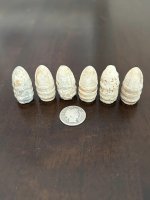SaltwaterServr
Sr. Member
I'm thinking that if we can maintain at least an 80% concentration of sulphides in the bioleach tanks then we wouldn't need any other type of leach. I am also thinking that after the bioleach, what is left could then be smelted into a dory bar and then further refined.
What I've read you'll still have 50-55% by weight and an unknown amount by volume of the reacted solids. With that much left over to still smelt, we might end up losing a lot of gold as the iron and magnetite will sinter pores closed, trapping it in the slag. It's on the nano particle level, but there's a lot there to be lost or gained.
Let me do some hunting around to see if I can find some production circuits using bioleach. I can't think of any modern circuit I've seen diagramed that didn't have a leach/recovery in it somewhere.
Got the waste effluent worked out, to a degree, thanks to reading some of the books I haven't yet waded through here. We'll probably be able to use the same fluid 3 or 4 times, depending on mercury content of the rock. Once it comes off of the solids in the bioleach tank, hit it with powdered limestone to neutralize it. It can be then used again in the bioleach tank. Other than that, it'll be limestone, lime, off to disposal.


![WP_20170212_07_49_55_Pro[1].jpg](/data/attachments/1293/1293697-c04a27a8387ac2b9ecd61233ff85bcf8.jpg)


